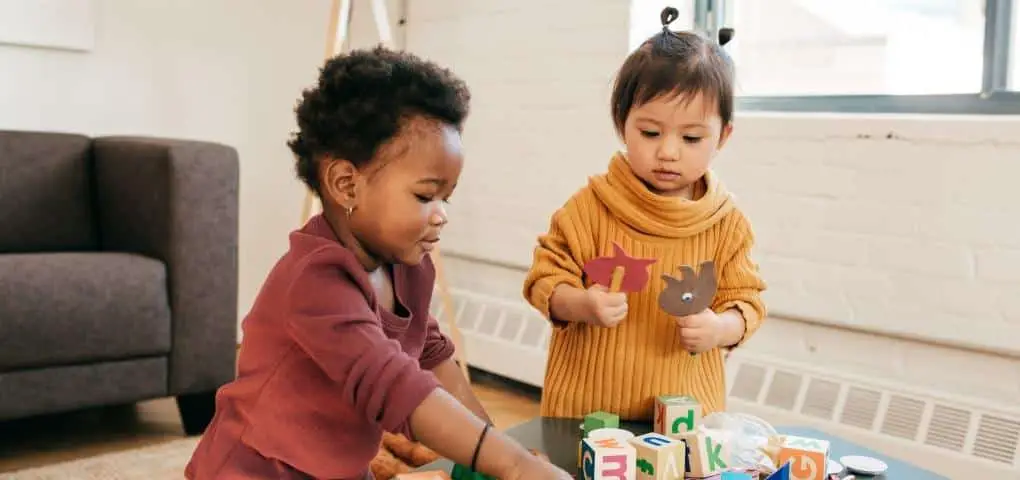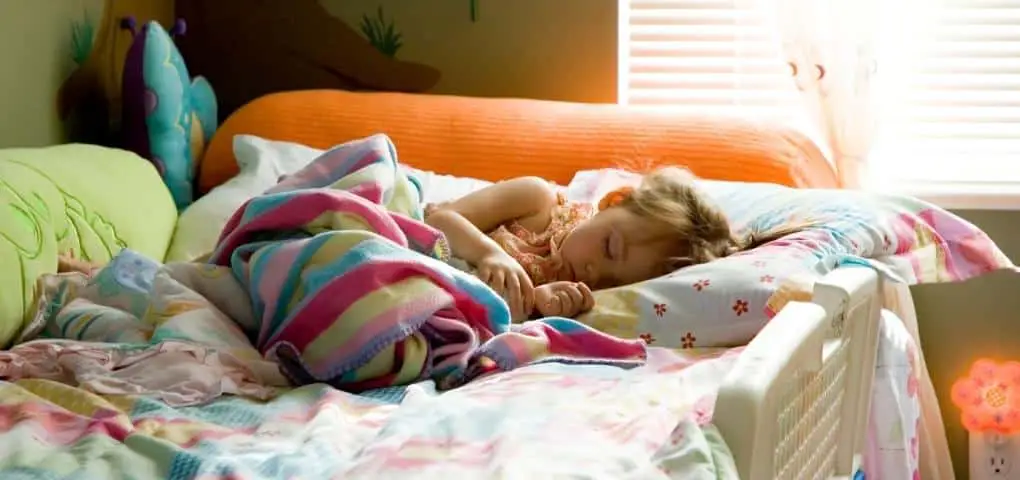
When do toddlers stop napping? The answer to this question is different for every child. Some toddlers may stop napping as early as 18 months old, while others may continue to nap until they are four or five years old. In general, most toddlers stop napping by the time they reach five years old. This is because, as children get older, they need less sleep.
If your toddler is napping less and less, don’t worry. This is perfectly normal and is a sign that your child is growing up. However, if you find that your toddler is having trouble sleeping at night, it may be time to talk to a doctor.
Kids stop napping altogether at some point, so you should not worry too much about children stop napping all of a sudden. This could be the beginning of the transition period for when kids stop napping as they grow older.
There are a few things you can do to help your toddler transition from taking regular naps to not needing them anymore. This article will explore when toddlers stop napping and offer some tips on how to make the transition easier for both you and your child!
Why Is Nap Time Important for Children?

Before we dive into when toddlers stop napping, it’s important to understand why nap time is so important for young children. Naps allow children to recharge their batteries and get the energy they need to power through the rest of the day.
Children stop napping when they become older. Until they do, falling asleep in the afternoon is very helpful. This is because falling asleep in the afternoon or having a daytime nap can help kids become healthier.
Naps also help children learn and remember information better. A study that was conducted by researchers at Harvard University found that children who took a nap after learning something new were better able to remember what they had learned than those who did not take a nap.
This is because naps give the brain time to process information and consolidate memories. So, if your child is struggling to remember what they learned in school, a nap may be just what they need!
Plus, nap times are believed to help kids grow and develop. Another study found that children who took regular naps had better motor skills than those who did not take naps. This is because naps give the body time to rest and recover from all of the physical activity that children do during the day.
Below are more benefits that come with nap time for kids:
Enhanced Mood and Increased Ability To Pay Attention
Children who take naps are more likely to have a positive mood and be able to pay attention when they are awake. This is because naps help reduce fatigue and restore energy levels. An afternoon nap can really benefit preschool-aged children.
However, parents must also know when to eliminate naps cold turkey and preventing kids from falling asleep in the afternoon. It takes commitment and dedication to make kids stop napping altogether. However, it’s not impossible.
Reduced Stress Levels
Napping can also help reduce stress levels in children. A study that was conducted by the University of Maryland found that children who took naps had lower levels of the stress hormone cortisol than those who did not take naps. Once your children skip naps, they will not have difficulty falling asleep at night.
However, if you want to promote an afternoon nap for your child every day, make sure to create an afternoon nap schedule. A daytime nap or an afternoon nap will make your child more energized for the rest of the day.
Improved Physical Health
In addition to reducing stress levels, naps can also help improve physical health. A study that was conducted by the National Institutes of Health found that children who took naps had lower blood pressure and a reduced risk of developing obesity.
However, your child might have trouble falling asleep because of nap time. Therefore, dropping naps should be the goal for parents once their kids grow older.
Daytime napping or a morning nap might be better compared to afternoon naps. Replacing nap time with more activities can also help in terms of helping kids avoid acute sleep restriction effects, especially during nighttime sleep.
Improved Immune System
Naps can also help improve the immune system. A study that found that children who took naps had a higher concentration of infection-fighting antibodies than those who did not take naps. This is because naps help the body recover from the physical activity of the day and reduce stress levels.
However, parents must eventually eliminate daytime naps and make sure that fewer naps are needed as kids grow older. This way, kids will get better sleep at night.
Increased Creativity
Naps can also help increase creativity. A study that was conducted by the University of California found that children who took naps were more likely to come up with creative solutions to problems than those who did not take naps. This is because naps give the brain time to rest and process information.
Better Gut Health
Lastly, naps can also help improve gut health. Research supports that children who took naps had a higher concentration of good bacteria in their guts than those who did not take naps. This is because naps help the body recover from the physical activity of the day and reduce stress levels.
So, When Do Toddlers Stop Napping?

Now that we’ve explored the benefits of naps for children, let’s take a look at when toddlers stop napping. Most parents observe their kids slowly starting to drop naps around 18 months old. However, some toddlers may stop napping as early as 15 months old, while others may not give up their afternoon naps until they are three years old.
There is no hard and fast rule for when toddlers stop napping. It really depends on the individual child and their sleep needs. Some children simply need more sleep than others and will continue to nap until they are older.
Talk to your pediatrician if you are concerned that your child is not getting enough sleep. They can help you determine if your child’s sleep habits are normal or if there is a problem that needs to be addressed.
In the meantime, enjoy the afternoon naps while they last! They won’t be around forever.
What Are the Signs That My Toddler Is Ready To Stop Napping?

Sometimes, parents may push their kids to nap even when they no longer need it. This can lead to problems such as sleep deprivation and resistance to bedtime. If you are unsure if your toddler is ready to stop napping, look for the following signs:
Your Child Takes a Long Time To Fall Asleep at Nap Time
One of the first signs that your child is ready to stop napping is that they take a long time to fall asleep at nap time. If it takes your child more than 30 minutes to fall asleep, they may be too old for naps. Therefore, you must consider when to stop naps.
Your Child Skips Naps Occasionally
If your child occasionally skips a nap, this is also a sign that they are ready to stop napping. This means that your child is more interested in doing other things than sleeping.
Your Child Naps for a Short Period of Time
If your child naps for a short period of time, this is also a sign that they are ready to stop napping. This is because their sleep needs have changed, and they no longer need a long nap.
Your Child Takes Too Long to Sleep at Night
If your child takes too long to sleep at night, this is a sign that they have overslept during nap time. While nap time is good, it becomes a problem when it causes your child to sleep too late at night. After all, kids need to sleep at least 11 hours at night.
In short, when do toddlers stop napping is a question that has no easy answer. It really depends on the individual child and their sleep needs.
However, there are some signs that your child is ready to stop napping. Just watch out for these signs, and you’ll be able to determine when to stop naps for your toddler.
How Do I Get My Kids To Stop Napping?

If you’ve decided that it’s time to stop naps for your toddler, there are a few things you can do to ease the transition.
Gradually Decrease the Length of Nap Time
One of the best things you can do is gradually decrease the length of nap time. For example, if your child normally naps for two hours, you can start by reducing it to one and a half hours. You can then continue to reduce the length of nap time until your child no longer naps.
Change the Time of Nap Time
Another thing you can do is change the time of nap time. If your child usually naps at noon, you can start to move it earlier or later. For example, you can start by moving it to 11 AM or 12:30 PM. You can then continue to adjust the time until your child no longer naps.
Encourage Your Child To Engage in Different Activities During Nap Time
You could also encourage your child to engage in different activities during nap time. For example, you can encourage them to read a book or play with toys. This will help them transition from napping to not napping.
Stop Naps on Weekends
You can also stop naps on weekends. This will help your child get used to not napping during the weekdays, too!
There are some things you can do to ease the transition. Just make sure to watch out for the signs that your child is ready to stop napping. With a little bit of effort, you’ll be able to successfully stop naps in no time!
How Do I Promote Good Sleep Hygiene for My Child at Night?

Even though nap time is beneficial for kids, it can compromise your child’s sleep hygiene at night. When choosing between getting a good night’s sleep or having nap times, you must prioritize your child getting a good night’s sleep. Good sleep hygiene is essential for your child’s health and development.
There are a few things you can do to promote good sleep hygiene for your child at night:
Make Sure That Your Child Has a Regular Bedtime Routine
One of the most important things you can do is ensure your child has a regular bedtime routine. This means you put them to bed at the same time every night and have them do the same things before bed every night. This could include taking a bath, reading a book, or saying prayers.
By establishing a routine, your child will know when it’s time to go to bed and be more likely to fall asleep quickly.
Create a Relaxing Environment in Your Child’s Bedroom
Another thing you can do is create a relaxing environment in your child’s bedroom. This means that their bedroom should be dark, quiet, and comfortable. You might want to consider investing in blackout curtains and a white noise machine to help your child sleep better.
Make Sure That Your Child Gets Enough Exercise During the Day
It’s also important to ensure your child gets enough exercise during the day. This is because exercise can help tiredness and promote a good night’s sleep. Just make sure that your child doesn’t exercise too close to bedtime, as this could make it harder for them to fall asleep.
Prohibit the Use of Gadgets Before Bedtime
It’s also important to prohibit the use of gadgets before bedtime. This is because the blue light from screens can disrupt your child’s sleep cycle. Gadgets should be off at least 30 minutes before bedtime to ensure your child can fall asleep easily.
Give Your Child a Glass of Milk Before Bedtime
Lastly, you can give your child a glass of milk before bedtime. This is because milk contains tryptophan which can help your child sleep better. Therefore, it’s worth including in your child’s bedtime routine.
Following these tips can promote good sleep hygiene for your child at night. This will help them get the rest they need to grow and develop properly. Parents will have the confidence that when their toddler stops napping, they will still be getting the proper amount of sleep at night.
What Are the Advantages of Getting a Good Night’s Sleep Over Nap Time?

There are a few advantages of getting a good night’s sleep over nap time.
- First, it allows your child to get the recommended amount of sleep for their age. Kids need anywhere from 11-14 hours of sleep a day, and napping can interfere with this.
- Second, it can help improve your child’s mood and behavior. A good night’s sleep can help regulate your child’s emotions and make them happier overall. If your child is happier and has better moods, it can make parenting easier for you.
- Lastly, it can help improve your child’s overall health. A good night’s sleep can boost your child’s immunity, help them maintain a healthy weight, and lower their risk of developing chronic diseases later in life. Therefore, you must ensure that your child gets a good night’s sleep every night.
While nap time can benefit kids, it’s important to prioritize your child getting a good night’s sleep. This is because good sleep hygiene is essential for your child’s health and development.
Common Misconceptions Parents Have About Nap Time

There are a few common misconceptions that parents make about nap time. Let us explore them below:
Kids Need Very Long Nap Times
One of the biggest misconceptions is that kids need very long nap times. It is often thought that the longer a child sleeps, the better they will feel when they wake up.
However, this is not necessarily true. In fact, research has shown that naps longer than an hour can actually make kids feel more groggy when they wake up.
It’s Best to Let Kids “Cry It Out”
Another misconception is that it’s best to let kids “cry it out” when they are trying to take a nap. This means parents will leave their children in their crib or bed and not go to them when they start crying.
However, this can actually make the problem worse. Kids who are left to “cry it out” can become more anxious and stressed, making it harder for them to fall asleep.
The Best Time for a Nap is Late in the Afternoon
Finally, another misconception is that the best time for a nap is late in the afternoon. It is often thought that this is when kids are the sleepiest.
However, research has shown that the best time for a nap is actually early in the afternoon. This is because it can help kids stay awake and alert later in the day.
As you can see, there are a few common misconceptions about nap time. It’s important to be aware of these to ensure your child is getting the best possible sleep.
Conclusion
Despite the benefits that nap time offers, it’s important to prioritize your child getting a good night’s sleep. This is because good sleep hygiene is essential for your child’s health and development.
If you have any concerns about your child’s sleep, be sure to speak with their pediatrician. They can offer more tips and advice on how to ensure your child is getting the best possible sleep.


Leave a Reply